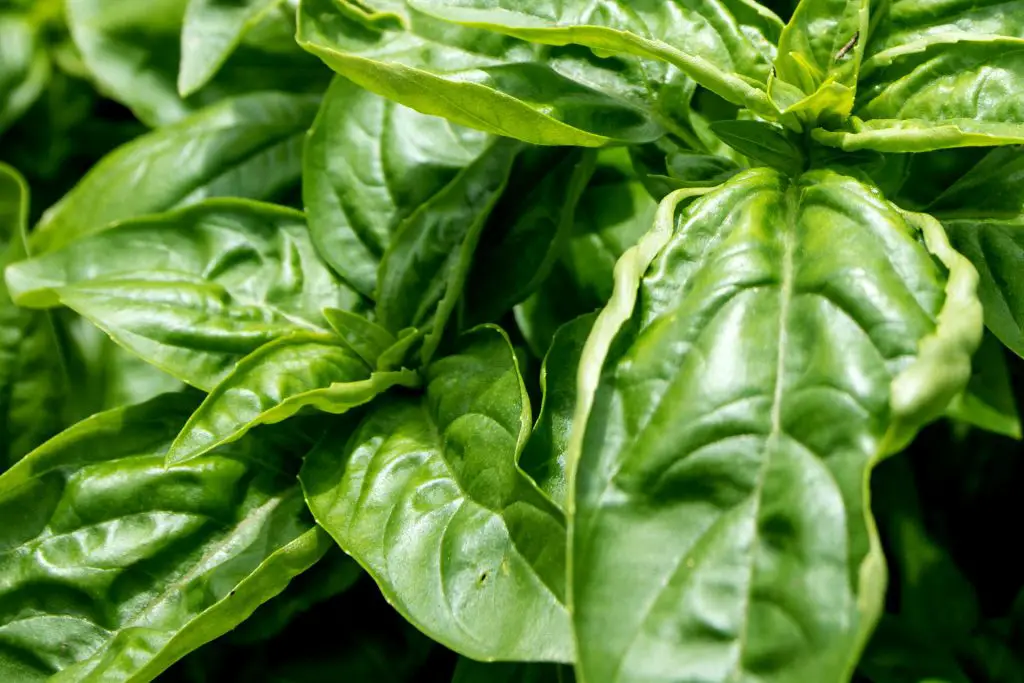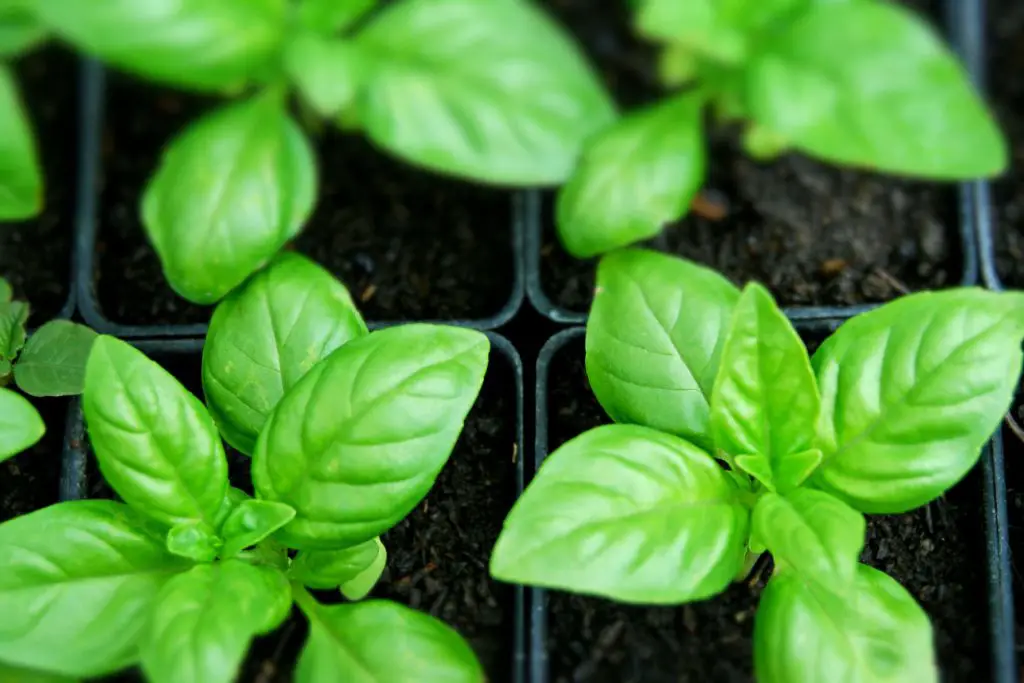Can You Propagate Basil? | Top Expert Warns Against Buying Basil Plants
The idea of propagating basil seems like a great idea. Basil is such an important flavoring in so many dishes that having a ready supply of your own fresh basil seems natural, especially as it seems simple to grow.
With its popularity it is no surprise that so many different stores sell basil plants . They seem to be everywhere. One of the most common and inexpensive places to find them is in local supermarket or grocery store, . Indeed, lots of people buy basil from supermarkets with the aim of to propagating them on their windowsill or in their garden . This is where the problems start.
Rebecca Bevan, a leading plant expert at the Royal Horticultural Society, has advised shoppers to think twice before being enticed into purchasing basil plants from leading supermarkets. The reason being is that these seemingly economically priced plants are of lesser quality, are not grown to be propagated, and thus, tend to have a high propensity to fail.
Buying Basil Plants For Propagation
It is easy to see why shoppers are tempted. Basil is one of the most widely used herbs in kitchens around the world, with many recipes listing it. If you were looking to create home -made Italian pesto, or other of the tens of thousands of savory dishes you are likely to find its use is called for.
Bevan though, has highlighted the particularly problem of keen gardeners trying to propagate these basil plants at home. Obviously, they are hoping to be able to produce a good supply of this fresh wonderful herb, But she has cautioned them them that they are likely to be in for disappointment.
She commented that if all you’ve got is a sunny windowsill indoors then basil is the thing to grow. but if you decide to buy them from the supermarket or grocery store they are unlikely to last very long. The reason for this is that they are not produced to be regrown but to supply you with just a few fresh basil leaves.
Sweet basil is the most common kind of fresh basil seen in stores. They are intensively farmed and are often of a very low quality. Because it takes only twenty-two days to get these basil plants from seed to sale in grocery stores, the roots of the plant will not have developed adequately leading them to quickly die.
Buying the Right Basil Plants

There are so many gardening programs and channels demonstrating the ease and advantages of growing basil from plants. It is therefore understandable that keen home gardeners are seduced into trying the process. Their mistake is buying the ready and easy availability of plants from their local grocery stores. In the end many buy these and end up being discouraged by the whole process.
This is a shame because the method of propagating basil plants should be straightforward, if you buy the right quality of plant. In fact the process of splitting or take cutting from basil plants to propagate more plants is a great way to develop your own basil supply. Just not from low quality, grocery store bought, plants.
Instead, you should head down to a garden center where you you will find a number of different varieties of more mature basil plants. These plants are likely to be of a far higher quality and be perfect for propagation.
Growing Basil from Plants
Once you obtain good quality well developed plants the process of growing basil from them is easy and can be accomplished in a couple of different ways, either by splitting the plant or taking cuttings from it.
Grow Basil from Cuttings

One of the easiest methods for propagating basil is to grow it from cuttings.
Grow Basil in Soil from Cuttings
Basil is a perennial plant. Once basil is established it will grow indefinitely so you should take your cutting from a mature plant.
- If you can take two cuttings from a plant,
- Plant each in moist perlite or vermiculite rich soil. The presence of either of theses inorganic minerals, will help the plants will grow thrive and need less work and watering.
- Keep in in a sunny window and water when the soil is dry.
- Be patient, it will take several weeks before they grow roots.
- Plant them in lager pots or directly into the garden once they’ve started to adequately root.
Grow Basil in Water from Cuttings
You can also grow cuttings in water. Simply remove some of the lower leaves and stick them in a glass of water.
- The cutting should be in a clear glass. The nodes of the cutting need to be adequately covered by a sufficient amount of room-temperature water.
- Keep in in a sunny window
- Replace the water every three to five days with new, room-temperature water.
- Observe the cutting unit you see the growth of roots! This might take a couple of weeks.
- When the cutting’s roots have grown adequately remove them from the water and plant it in nutrient rich soil.
If you are finding that the cuttings fail to root you can coat the bottom of the cuttings in a rooting hormone before putting them into the water.
Both methods of propagating basil from cuttings will work well but some gardeners prefer using soil over water other water, try both.
Separating out An Existing Plant
You can also propagate basil by dividing an existing plant. it is similar process to taking a leaf cutting. With this process rather than taking leaf cuttings from a mature plant, instead we take the plant and split by the stems.
Propagating a Basil Plant By Splitting
With this method we dig up the existing plant and split it via the various stems growing replanting these in either water or soil.
- Take the main stem of the plant and remove the stalks where they meet the main stem.
- Keep dividing until each are just single stems
- Plant these in either moist perlite or vermiculite rich soil or add to water (see above)
- The cutting should be in a clear glass. The nodes of the cutting need to be adequately covered by a sufficient amount of room-temperature water.
- Keep in in a sunny window
- Replace the water every three to five days with new, room-temperature water
- Observe the cutting unit you see the growth of roots! This might take a couple of weeks
- When the cutting’s roots have grown adequately remove them from the water and plant it in nutrient rich soil.
Another way to propagate separating is to do so at the roots. To do this cut up the root ball into pieces and replant these moist perlite or vermiculite rich soil. As long as they’re kept well watered and in an warm area where there’s six to eight hours of sunlight, they should thrive.
Growing Basil from Seed
Bevan pointed gardeners who wanted a good crop of basil in thorough both summer and autumn months in another direction, that of growing the herb from seed. This produces stronger and hardier plants less prone to die.
To back up her arguments Bevan showed how healthy plants had been produced using a simple terracotta pot and compost in which three basil seeds had been sowed. Once the seeds germinate, the basil plant that looks strongest and healthiest is lift in the in the pot while tyou remove the other two and replant them in other pots or elsewhere.
Process of Growing Basil from Seed
Growing basil from seed is possibly the most cost-effective way of producing high-quality basil. You can start seeds indoors or directly sow them outdoors once your soil has warmed up.
You will need:
- Seeds – Buy these at any garden centre or online retailer.
- Soil – A pot with good drainage.
- Water – Water regularly until the plants have germinated.
- Sunlight – Full sun is best, but if you live somewhere that gets little sunlight, then half day light would be fine.
- Temperature – Basils like warm temperatures so don’t put them outside when it’s cold. If you’ve got a heated greenhouse, this may not be a problem.
- Potting mix – This is usually made from peat moss, perlite and vermiculite.
- Fertiliser – Use a liquid fertiliser such as fish emulsion.
When sowing basil seeds, make sure you choose the right variety. There are several varieties of basil. The two main types of basil available; sweet basil (Ocimum basilicum) and holy basil (Tulsi). . You will probably find sweet basil is more easily available but you can usually buy tulsi seeds from good gardening supply outlets.
If you want to grow basil from seed, here are the steps involved:
- Sow the seeds in small pots filled with a mixture of potting mix and compost. Place the pots on top of trays filled with water. Keep the pots moist by adding more water every now and again.
- When the seeds have sprouted, transfer the pots into individual containers. These can be plastic cups or saucers. Make sure the containers have holes in the bottom so excess moisture drains away.
- Once the plants have grown to about 10cm tall, place them under a grow bulb. Alternatively, you could use a fluorescent lamp.
- Continue to feed the plants with a liquid fertilizer every week or so.
- Harvest the leaves whenever you feel like eating them!
Bevan points out that basil grows best in a sunny place. They need around six to eight hours in direct sunlight every day to thrive and if planted outside will do best in the part of the garden that is warmest and has the most direct sunlight[1].
Different Environmental Conditions for Different Herbs
It is important to remember that each herb spices requires different conditions to thrive. For example mint will grow best in shady parts of the garden out of too much sunlight.
Summary: Can You Propagate Basil? Caution When Buying Basil Plants
Can You Propagate Basil? Yes you can propagate basil either through taking a cutting or by separating an existing plat at the root. The problem is the source of the plant. If you buy a mature plant from a garden supplies outlet you should be good to go, but if you try to propagate from a grocery store bought plant that are generally undeveloped then you are very likely to run into problems.
Many people love the scent and the taste of basil and it is now a stable ingredient in countless recipes and if you are using it in your cooking fresh basil is the way to go.
The general, Basil is a great and relatively easy herb to grow but if you are going to grow it then you are better served using the right source of plant or seed to develop your crop.
Commonly Asked Questions
Q. Does pinching off the flowers from basil plants make more
leaves grow?
To foster new foliage, ‘pinching off’ any of the flowers as they grow is counterproductive; in fact, it encourages blossoms to form in the leaf axils, which reduces the overall harvest. Instead, to prevent early flowering replant the basil every few weeks .
Notes:
[1] Lindsay Pearson and Dan Drost, Utah State University: Basil in the Garden
